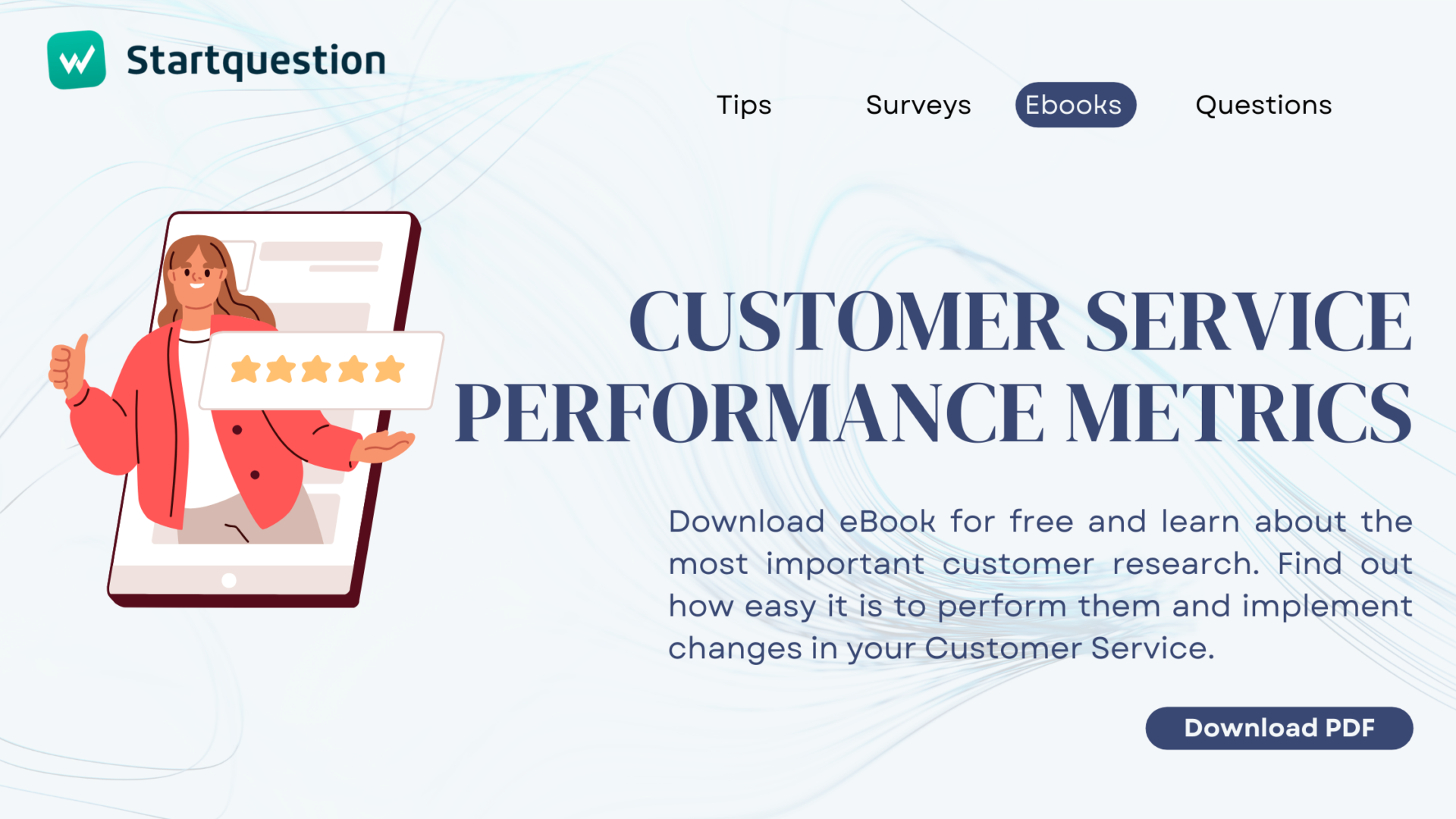Employee strengths, those inherent qualities and capabilities that make individuals stand out hold the key to enhanced productivity, engagement, and overall organizational growth. Identifying and leveraging these strengths can fuel a thriving workplace culture and empower teams to achieve extraordinary results. Let me show you how to do it.
As an employer or human resources specialist, you dream about top-notch and trustworthy employees who deliver high-quality work to achieve company goals, right?
In this article, I delve into the significance of recognizing employee strengths, explore practical methods for identification, and discuss strategies to leverage these talents to their fullest potential. Get ready to unleash the hidden power within your people and propel your organization to new heights!
Startquestion is a platform for collecting feedback from employees (and candidates), allowing for easy data analysis and sharing of conclusions in the organization in an accessible way without technical or research knowledge.
What Are Employee Strengths?
Let’s start with a concise definition.
Employee strengths are individuals’ abilities, job related skills, attributes, and qualities to excel in their work and contribute positively to their organizations. These strengths encompass a range of aptitudes and characteristics that vary from person to person.
Strengths employers look for in an employee include:
- Technical expertise
- Effective communication
- Adaptability
- Organizational skills
- Leadership skills
- Teamwork
- Time management
- Creativity
- Attention to detail
- Emotional intelligence
Work strengths are unique to each individual and are crucial to their overall performance, job satisfaction, and professional growth. Harnessing employee strengths enhances individual effectiveness and fosters a dynamic and successful work environment.
Ten Key Employee Strengths in Workplace
What are the key strengths of dependable employees? I would say it’s a combination of personality traits, empathy, and technical and soft skills.
Here are some examples of employee strengths for performance reviews, job interviews, or other situations that will allow the employer to assess whether a given candidate (or employee) is the perfect fit for the organization.
Teamwork
Strong team players are able to work well with other employees, contribute their ideas, and support the success of the group in everyday operations. Team oriented specialists value cooperation, respect diverse perspectives, and foster a positive work environment.
Empathy & Positive Attitude
Employees with strong emotional intelligence possess self-awareness, empathy, and good interpersonal skills. They can navigate social dynamics, handle conflicts constructively, and build strong relationships with colleagues and clients.
Good Communication Skills
Effective communication is crucial in the workplace. Employees who possess strong verbal and written communication skills can convey information clearly, listen actively, and collaborate effectively with colleagues and stakeholders.
Self-motivation
In today’s fast-paced and ever-changing business environment, self-motivated and adaptable employees can easily adjust to new situations, embrace change, and handle challenges with resilience.
Problem-Solving Skills
Employees who excel in problem-solving can analyze complex situations, identify root causes, and develop creative solutions. They are resourceful, critical thinkers who can make informed decisions.

Confidency
Confident employees exhibit self-assurance and assertiveness in their work, enabling them to take calculated risks, and make decisions with conviction. They are more likely to embrace new opportunities, handle setbacks, and demonstrate resilience in the face of adversity.
Critical Thinking
Critical thinkers excel at anticipating potential obstacles, spotting opportunities, and adapting strategies to achieve desired outcomes. Their ability to stay focused and think critically enhances problem-solving, innovation, and overall effectiveness in the workplace.
Technical Expertise
Employees with strong technical skills and knowledge in their respective fields can perform tasks efficiently, troubleshoot problems effectively, and contribute to innovation and growth.
Leadership Skills
Even if not in a formal leadership role, employees with leadership qualities can inspire and motivate others, take initiative, and guide projects or teams to achieve desired outcomes.
Time Management
Employees who effectively manage their time can prioritize tasks, meet deadlines, and maintain productivity. They are organized and can balance multiple responsibilities efficiently.
Work strengths are unique to each individual and are crucial to their overall performance, job satisfaction, and professional growth. Harnessing employee strengths enhances individual effectiveness and fosters a dynamic and successful work environment.
How to Effectively Identify Your Employees’ Strengths?
Discovering your employees’ strengths is a valuable process that can aid in comprehending their capabilities, enhancing their engagement, and optimizing their performance.
Here are some practical strategies for identifying essential employee strengths:
Observation
Pay close attention to how your employees perform their tasks and interact with others. Observe their work habits, problem-solving approaches, body language, and communication styles. Look for areas where they excel, demonstrate enthusiasm, or display a unique work ethic.
Performance Reviews
Regularly conduct performance reviews or evaluations to assess each employee’s strengths and weaknesses. Review their achievements, feedback from colleagues or clients, and any exceptional contributions they have made to projects or initiatives. These reviews can provide valuable insights into their areas of expertise.
Feedback and Input
Encourage open and honest communication with your employees. Regularly provide feedback on their performance and ask for their input on their own strengths. Discuss their career goals, aspirations, and areas where they feel they excel. Such dialogue can provide valuable information about their self-perception and how they view their own strengths.
Skills Assessments
Utilize skills assessments or aptitude tests that are relevant to your employees’ roles and responsibilities. These assessments can provide objective data about their competencies, technical skills, problem-solving abilities, and other crucial employee strengths.
Self-Assessment Tools
Provide your employees with self-assessment surveys that help them reflect on their strengths and areas of expertise. These tools can include questions about their preferred work styles, personal interests, and activities that energize them. This self-reflection can offer valuable insights into their strengths.
Self Evaluation Template
Self-evaluation is an essential part of the overall employee evaluation. Use ready Self Evaluation Form – collect, view, and filter feedback in one place and create automatic reports for HR.
Self Evaluation Template
Self-evaluation is an essential part of the overall employee evaluation. Use ready Self Evaluation Form – collect, view, and filter feedback in one place and create automatic reports for HR.
360-Degree Feedback
Gather feedback from colleagues, supervisors, and subordinates through a 360-degree feedback process. This approach provides a comprehensive view of an employee’s strengths and areas for development. Collecting feedback from different perspectives can help identify strengths that might not be immediately evident.
Employee Development Discussions
Engage in regular discussions with your employees about their professional development. Ask about their career aspirations and areas where they would like to grow. These conversations can uncover hidden strengths or interests that they may want to explore further.
Job Rotation or Special Assignments
Provide opportunities for employees to take on different roles or projects. By exposing them to various tasks and responsibilities, you can identify strengths that might not be apparent in their current position. Job rotations can also help employees discover new talents and passions.
Tip: Remember that identifying employees’ strengths is an ongoing process. It’s important to create a supportive and open environment where employees feel comfortable providing feedback about their strengths, weaknesses, and areas for growth.
360 Degree Survey
If you want to be a good leader, you have to be open to criticism. Without knowing your strong and weak sides it will be extremely difficult for you to develop and make your company achieve success.
360 Degree Survey
If you want to be a good leader, you have to be open to criticism. Without knowing your strong and weak sides it will be extremely difficult for you to develop and make your company achieve success.
How to Help Employees Develop Their Strengths?
After determining your employees’ strengths, it’s crucial to support their growth and aid them in further developing and utilizing those strengths. Consider the following methods to assist employees in enhancing their specific skills:
Provide Resources and Training
Offer resources, training programs, workshops, or courses that align with employees’ strengths. This can help them deepen their knowledge, acquire new skills, and refine their existing strengths. Ensure that the training opportunities are relevant, accessible, and tailored to their specific needs.
Apply Mentorship and Coaching
Provide mentors or coaches who can guide employees in developing their strengths. Mentors can provide valuable insights, offer support, and share their own experiences. Regular coaching sessions can help employees identify growth areas, set goals, and receive feedback on their progress.
Assign Challenging Projects
Assign employees projects or tasks that leverage their strengths. Provide them with opportunities to apply and develop their skills in real-world situations. Challenging assignments can boost their confidence, enhance their expertise, and provide valuable learning experiences.
Provide Constructive Feedback
Provide regular feedback to employees on their progress in developing their strengths. Offer constructive feedback, guidance, and specific recommendations for improvement. Include discussions about their strengths and how they can leverage them effectively in their current and future roles.
Employee Training Feedback Survey
Find out if your employees get everything they need during their training.
Employee Training Feedback Survey
Find out if your employees get everything they need during their training.
Recognize Achievements
Acknowledge and appreciate employees’ strengths and their efforts to develop them. Recognize their achievements and contributions publicly, highlighting how their strengths have positively impacted the organization. This recognition can motivate them to continue developing their strengths and contribute further.
Promote Peer Collaboration and Networking
Encourage employees to collaborate with their peers and engage in knowledge sharing. Facilitate networking opportunities within the organization or industry where employees can learn from others who possess similar strengths or expertise. Building connections can provide additional learning opportunities and inspire further development.
Create Individual Development Plans
Collaborate with employees to create individual development plans that focus on their strengths. Help them set goals, identify development activities, and establish timelines for achieving those goals. Regularly review and update these plans to ensure they remain aligned with their strengths and aspirations.
Develop a Supportive Culture
Foster a supportive culture that values and encourages the development of employees’ strengths. Encourage knowledge sharing, collaboration, and a growth mindset. Celebrate and promote a culture where employees feel empowered to utilize and develop their strengths.
Active Listening with HR Surveys Software Tools
It is vital to continuously develop employees’ strengths as their interests and goals may change over time. To achieve this, regularly review their development plans, offer ongoing support, promote good work ethics, and adjust strategies to ensure their continuous growth and optimal performance in their roles.
A helpful strategy for achieving this goal is listening to employees’ voices, analyzing their training needs and job satisfaction, and reacting based on the information obtained. Survey software is a tool that will help you build a culture of mutual respect and feedback, openness, and dialogue.
Measure Work Related Strengths with Startquestion
Let me recommend our tool to you. Startquestion is a platform for collecting feedback from employees (and candidates), allowing for easy data analysis and sharing of conclusions in the organization in an accessible way without technical or research knowledge.
Are you ready to discover the strengths and weaknesses of your employees?
Get inspired by ready-made HR survey templates prepared by specialists or test Startquestion for free to see how it can make it easier for you to hear your employees’ voices.




